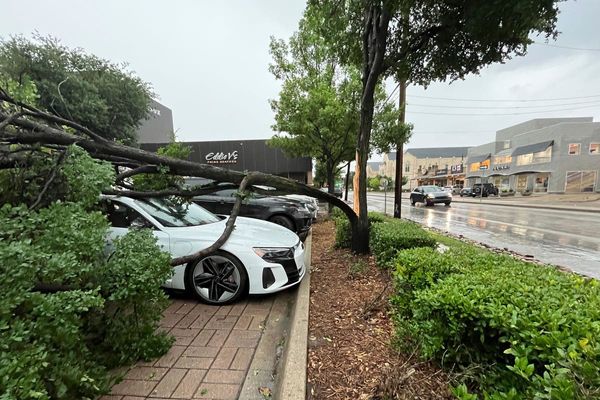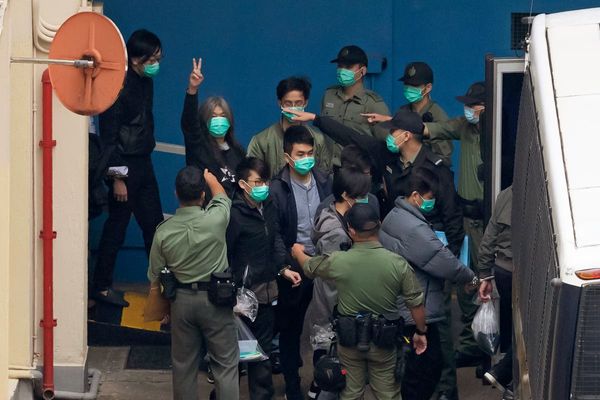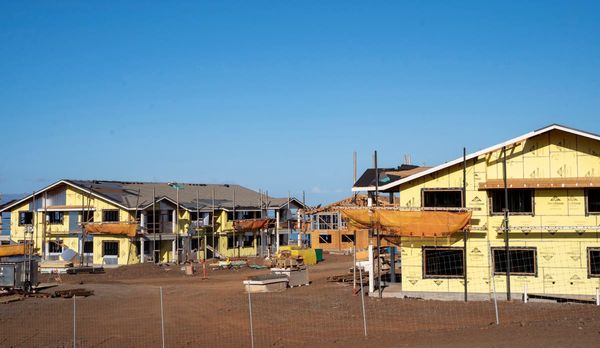WASHINGTON — Decisions on electric transmission, grid stability, extreme weather, climate impacts and leadership await the Federal Energy Regulatory Commission (FERC), the independent national agency that regulates the power grid, as it enters the new year with an interim chairman at the helm and down a member.
“FERC’s significance is perhaps greater than it ever has been,” Todd Snitchler, CEO of the Electric Power Supply Association, an industry trade group, said in an interview. “I don’t think it’s a little-known agency anymore.”
As climate effects grow more prominent, utilities push toward zero-emission electricity and questions remain about how to connect new sources to the grid, the agency known for acronym-heavy jargon is more firmly in the public eye, grid experts said.
The five-member commission will be without Richard Glick, the former chairman and a Democrat whose term ended Dec. 31, after Sen. Joe Manchin III, D-W.Va., chairman of the Senate Energy and Natural Resources Committee, declined to hold a renomination hearing, saying he was “not comfortable” doing so.
President Joe Biden last Tuesday named Willie Phillips, a Democrat who has served as a FERC commissioner since December 2021, acting chairman.
Biden has not named a replacement for Glick, who drew ire from Senate Republicans and Manchin over policies to tighten environmental oversight on pipelines and new guidelines for natural gas projects.
The empty seat leaves the commission with four members, two Democrats and two Republicans.
A White House spokesman did not respond to a request for comment, and Manchin spokeswoman Sam Runyon referred questions to a statement the senator made on Jan. 3 about Phillips. “Willie Phillips is a supremely qualified and reasonable person and he understands the need to balance affordability and reliability,” Manchin said.
When he led the agency, Glick hired Sarah Venuto, a former staffer to Manchin. Venuto left FERC last year.
Beyond reliability, FERC must knock down barriers to getting zero-emissions electricity onto the grid and shore up electric infrastructure to withstand extreme weather and physical and cyber attacks, Glick said in a Dec. 30 letter to Biden. During his tenure, the agency notched two firsts — establishing an office of public participation and naming a senior counsel for environmental justice and equity.
Because FERC functions somewhat like a court, deadlocked 2-2 decisions can delay energy projects or reforms the agency pursues.
Best with five
Industry representatives and advocates from watchdog groups said FERC works best with a full slate of five commissioners.
“As an independent regulatory agency, FERC plays a critical role in the review and approval of energy infrastructure projects that allow the safe and reliable transportation of natural gas,” Amy Andryszak, CEO of Interstate Natural Gas Association of America, which represents gas companies, said.
“It is critical that any new commissioner demonstrates a commitment to a predictable and clear regulatory process and to evaluating each project on its merits in accordance with federal law to ensure that needed natural gas infrastructure will be built in a timely fashion,” Andryszak said.
Tyson Slocum, director of the energy program at Public Citizen, a watchdog group, said in an interview the White House search for Glick’s replacement should be well underway if the administration is serious about advancing policies at the agency.
“I do think you need, for a lot of the things that FERC is trying to do, you need three Democrats,” Slocum said in an interview. “If they haven’t already started the process,” he said of the nominee search, “they’re already behind.”
FERC and the North American Electric Reliability Corporation, a private sector organization that helps oversee the grid, said Dec. 28 they would investigate how the grid fared during the winter storm that swept across the country and stressed grid operators nearly to breaking.
“It was flip-of-the-coin luck that we didn’t have rolling blackouts,” Slocum said.
Coupled with recent physical attacks on electric systems in North Carolina and Washington state, commissioners will be interested in physical security for the grid too, Slocum said. “How is FERC going to address those so that we don’t have repeated emergency events?”
John Moore, director of the Sustainable FERC Project, which is housed at the Natural Resources Defense Council, said there is nearly a terawatt worth of power — about 1,000 gigawatts, or roughly 333,000 utility-scale wind turbines — in line to be connected to the electric grid.
That pent-up demand is overwhelmingly from wind, solar or storage projects, Moore said.
Awaiting connection
Authors of a Lawrence Berkley National Laboratory study, released in April, found more than 1,300 gigawatts worth of juice from those three sources were waiting to be connected, and that they accounted for 93% of all proposed capacity.
The agency should prioritize the completion of a pending proposal about electric transmission planning, Moore said. Doing so would help bring renewable-generated electricity online and dispatch power from one region of the country to another when needed, as operators in the Midwest did to the East and the Southeast during the December winter storm.
High-voltage transmission lines are like “extension cords” that can almost “literally be plugged in” and send power from one region, like the wind-rich Great Plains, elsewhere, Moore said. “More lines like this would really help smooth power, enabling greater transfers of power.”
Rob Gramlich, president of Grid Strategies and a former FERC staffer, said proposals about transmission and interconnection will be top issues this year. The agency should “embrace its role as the transmission regulatory of the country” and encourage people designing the transmission systems today to plan for the electricity mix in the decades to come.
“It seems like motherhood and apple pie,” Gramlich said by phone. “But that isn’t being done.”
Finding a new chairperson of the agency — the president can name a chairperson whenever they please — without conflicts of interest may be tricky.
Agency ethics rules bar commissioners who have been involved “personally and substantially” in issues before FERC from voting on the given issue.
As more low-carbon sources come online, state utility regulators and FERC should be watching closely for reliability issues, Snitchler said. He questioned how smoothly new sources can be connected, citing recent disputes over whether offshore wind projects in Massachusetts and New Jersey could properly be integrated to the broader grid.
“If we want to make sure this transition goes well,” Snitchler said, “we’ve got to get it right.”
The Energy Department during the Trump era tried to put into force a policy that favored coal and nuclear power.
By comparison, the Biden administration is focusing heavily on renewable energy, Snitchler said. “It feels like the pendulum has simply swung from one side to the other.”
Seen as a moderate with a deferential bent to utilities and a focus on diversity, Phillips worked at the North American Electric Reliability Corp. and was chairman of the Washington, D.C., public service commission before joining FERC.
“Utilities should look like the communities they serve,” Slocum said. “I think that’s his perspective on how you push for change in the utility industry.”
Whoever the president picks would have to get through Manchin’s committee before joining Phillips, Democrat Allison Clements and Republicans Mark Christie and James Danly, who is based full time in Tennessee.
Before issuing an order, commissioners often haggle and negotiate, much like judges on a court.
“That becomes more difficult if you can’t walk down the hall and talk with your fellow commissioner,” Slocum said.
Danly’s term expires at the end of June, though the administration could renominate him and pair that nomination with a Democrat. Like other independent agencies, FERC may not have more than three members of one political party serving on its board.
“There’s the potential for one or two new faces at the commission” this year, Snitchler said.







